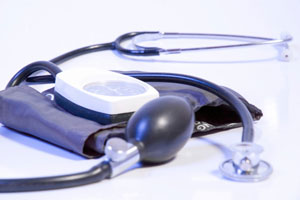AN Australian hypertension expert has called for an increased role for ambulatory blood pressure monitoring in Australia, as new UK guidelines recommend routine use of the ambulatory technique to diagnose hypertension.
Professor Barry McGrath, adjunct professor of medicine at Monash University, was a member of the expert panel that recently finalised a new Australian position statement on ambulatory blood pressure, due to be released by the National Heart Foundation early next month.
He said there was mounting evidence that ambulatory blood pressure monitoring was now the “gold standard” for diagnosing hypertension.
“It’s more accurate, more diagnostic of risk of future events and it should be more widely used in our practice”, said Professor McGrath, who wrote the National Heart Foundation’s current position statement on ambulatory blood pressure, released in 2002. (1)
Professor McGrath also recommended increased use of ambulatory monitoring among people at high risk of cardiovascular disease, such as patients with diabetes, irrespective of their clinic blood pressure measurement.
“Ambulatory blood pressure is underutilised in high-risk patients at the moment … it can provide some very important data in guiding treatment.” For instance, ambulatory blood pressure monitoring could help detect elevated night-time blood pressure, and masked hypertension.
The UK’s National Institute for Health and Clinical Excellence (NICE) last week released new guidelines on managing hypertension in primary care, which change the way hypertension is managed for the first time in a century. (2)
The old UK guidelines had recommended repeat clinic BP measurements to diagnose hypertension, which is also the current standard practice in Australia. However, the new guidelines recommend using ambulatory blood pressure monitoring to diagnose hypertension in all patients with a clinic blood pressure measurement of 140/90 mmHg or higher.
“The move towards the use of ambulatory blood pressure monitoring will help to avoid the white coat effect”, the NICE statement said.
Research published in The Lancet last week found that ambulatory blood pressure monitoring was more cost-effective than repeat clinic or home-based measurements for diagnosing hypertension following an elevated initial reading in the clinic. (3)
The research used a hypothetical model to analyse the three strategies and found that ambulatory monitoring was more cost-effective because it increased correct diagnoses and reduced overdiagnosis.
“Additional costs from ambulatory monitoring were counterbalanced by cost savings from the better targeting of treatment”, the researchers wrote.
NICE estimated that its switch to ambulatory BP monitoring would save the National Health Service £10 million ($A15.6 million) after 5 years.
Professor McGrath said the research was interesting, particularly as there had been insufficient data on the cost effectiveness of blood pressure monitoring.
“It’s probably the best cost-effectiveness study that I’ve read. It covers the majority of variables”, he said.
The study may have even underestimated the cost effectiveness of ambulatory monitoring, as it did not factor in the cost of side effects of antihypertensive drugs and based treatment costs on the use of generic drugs only, Professor McGrath said.
If ambulatory monitoring becomes more widely used in Australia, ensuring quality control will be of key importance, he said. This should include training doctors in the appropriate use and interpretation of ambulatory monitoring results.
– Sophie McNamara
2. National Institute for Health and Clinical Excellence. Hypertension: management of hypertension in adults in primary care. August 2011
3. Lancet 2011; 24 August (online)
Posted 29 August 2011

 more_vert
more_vert
Blood pressure readings are widely diurnal regardless of how they are taken, sitting, lying or ambulatory.
To be effective, whichever method is used, it should be at the same time of the day.
I still believe that the early morning reading is the most appropriate.
In many ways it would be better if the patient were blinded to the measurements – anxiety over the reading is a source of hypertension in itself. We also need to educate both patients and practitioners that individual readings are not of any consequence unless there is a clinical hypertensive emergency – treatment otherwise should be long-term, not acute.
This is a good recommendation as long as the automatic bp is accurate. Too often in my specialty of anaesthesia I see automated bp readings that are significantly inaccurate, sometimes wildly so, and that would prompt exactly the opposite management to what is needed.
That’s all very well, but they must educate people not to come to emergency departments all the time just because their home BP monitor showed a high-ish reading. Nothing more silly than people attending emergency departments at all hours of the day or night because of concerns over hypertension.